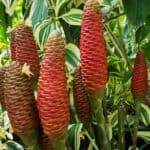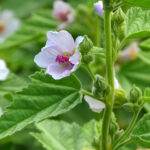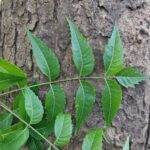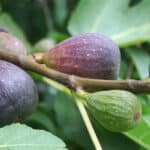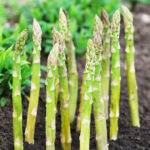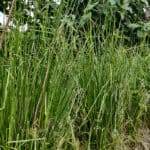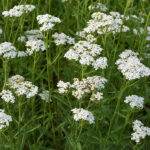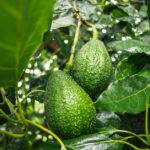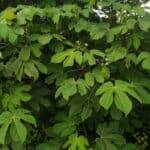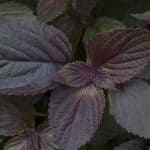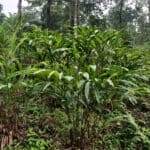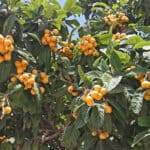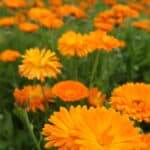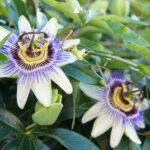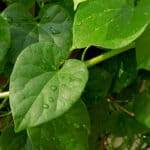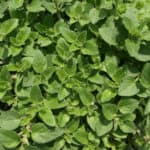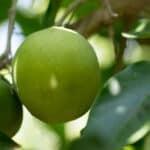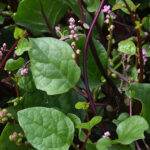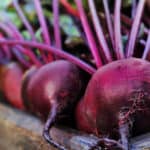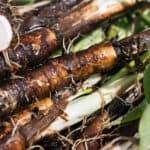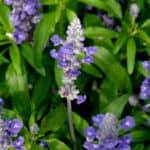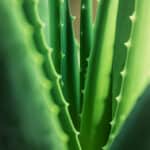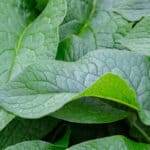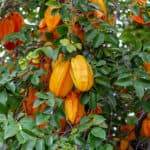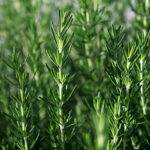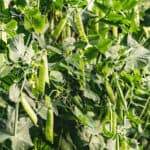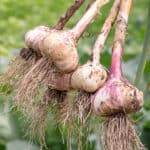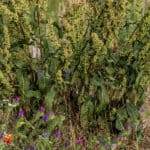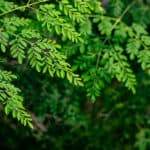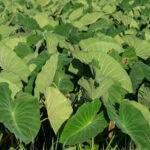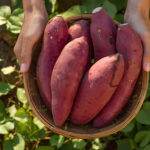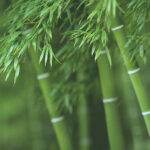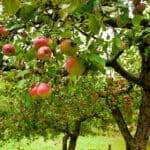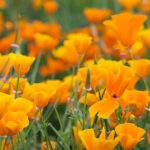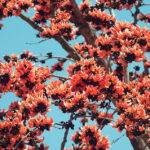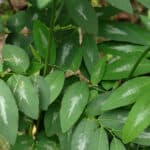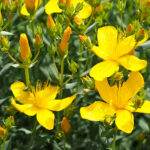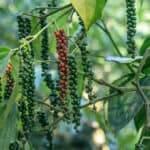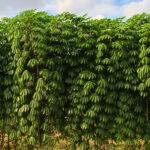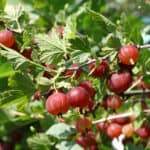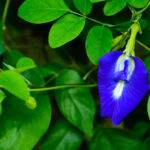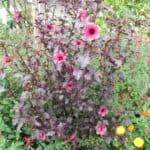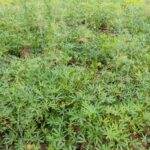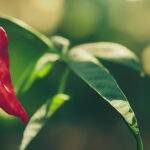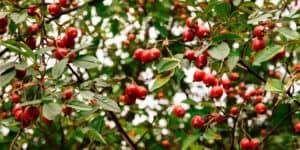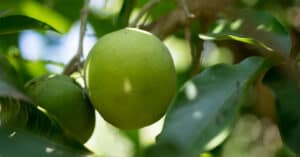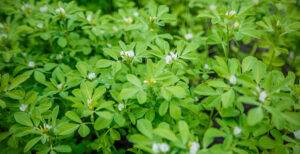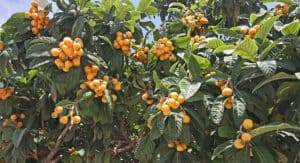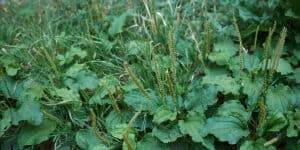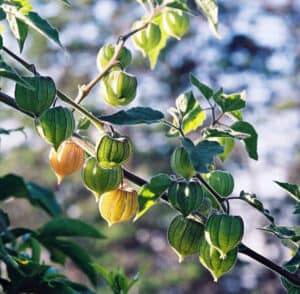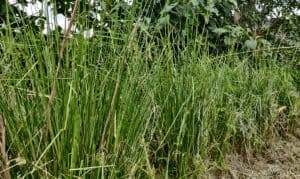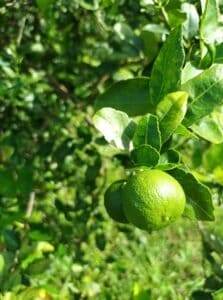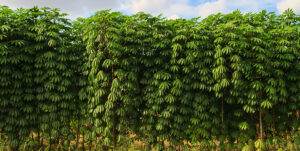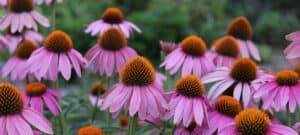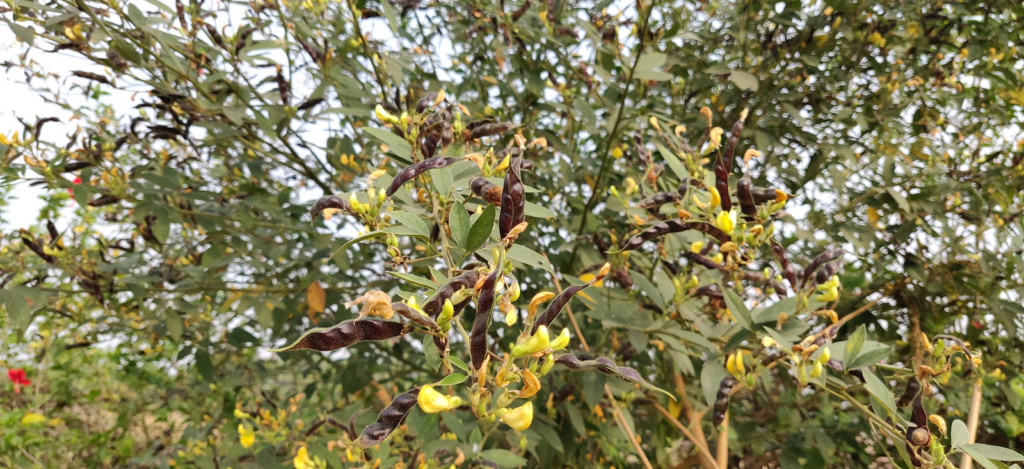
Growing and Including the Versatile Pigeon Peas
When we started our food forest journey, one of the very first things we did was experiment with ways to include pigeon pea as it is a major part of our diet. After exploring different locations, we have found the ones that work for us and the plant, which is beside our newly planted fruit trees and along the bund of our field. Why? You’ll know by the end of this growing guide…
Cultivated and grown as a multi-utility pulse crop, Pigeon pea is a main food in Asia, Africa and Latin America. A drought-tolerant crop known for its higher potassium content, and presence of dietary protein along with other rich sources of mineral nutrients, pigeon pea is something you will end up consuming in some form or another across these continents.
The scientific name is Cajanus cajan and it belongs to the family Fabaceae. Considering the wild relatives and resemblance, the origin is considered to be from India and Africa. It is planted as both an annual and perennial, the perennial plant has a life of around 5 years post which the yield decreases.
The local names are toor in Marathi, tuar in Hindi, arahar in Bengali and Assamese, rahr in Nepali, shakul in Persian, adhaki or tuvari.
The global production is estimated at 4.49 million tons out of which 63% comes from India. It is cultivated across the tropical semi-arid zones of India.
Plant Description
In cultivated ecologies, pigeon pe is known for its ability to extensively adapt to a range of landforms, soils, rainfall and temperatures.
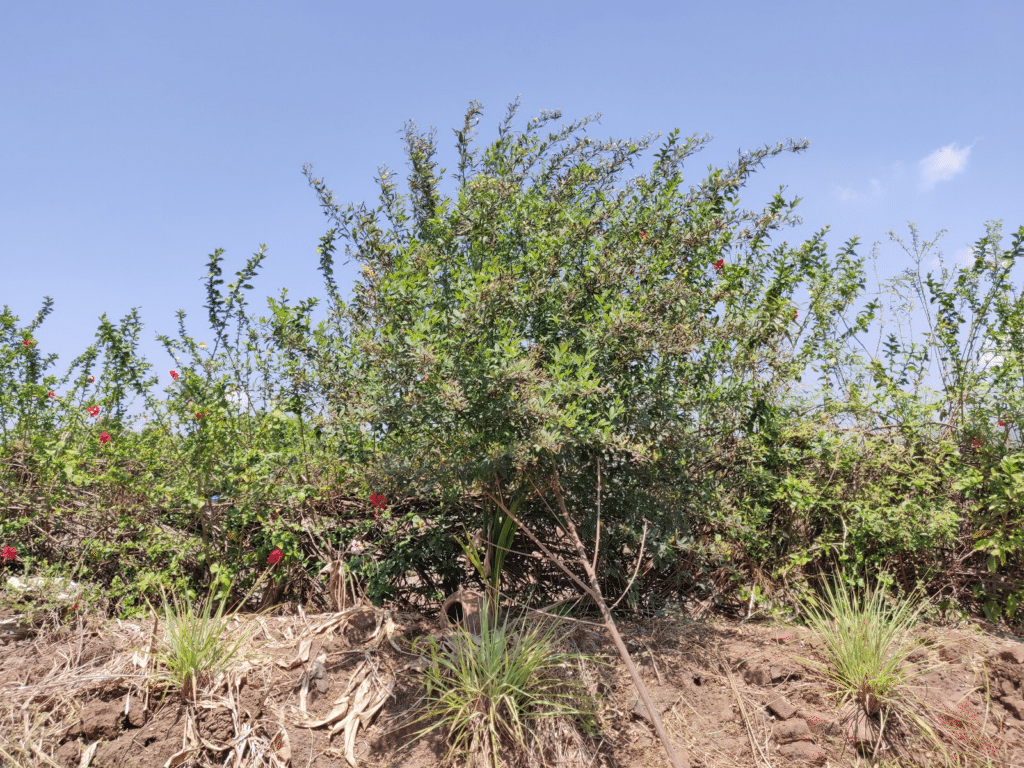
It is a hard woody shrub with a deep taproot system and can go up to 2 to 3 meters below ground. There are different varieties around the world, from tree-like tall to small bushes, depending on the variety, it grows around 5 to 10 ft tall and 4 to 5 ft in spread or larger based on the availability of space.
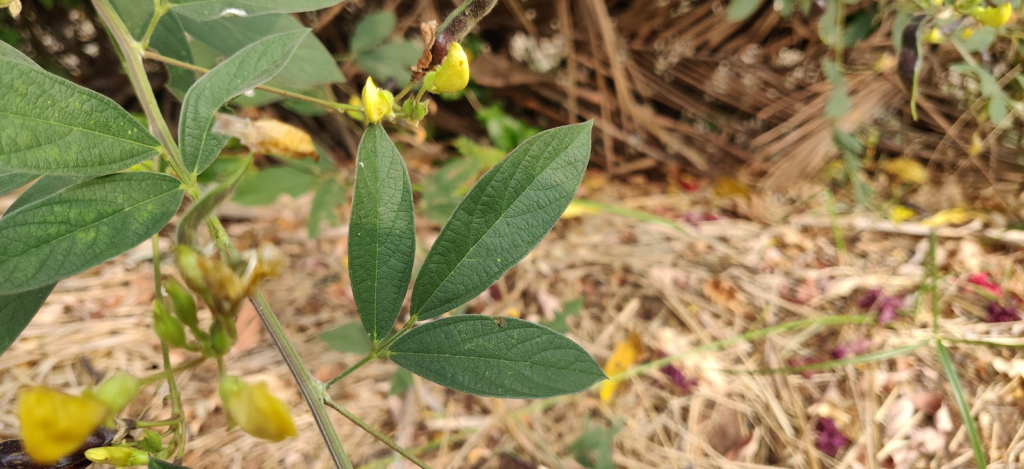
The primary leaves are simple, and elliptical in shape, the latter ones are pinnately trifoliate. The stems have a bush-type branching pattern however it can vary based on varieties, external factors and stress.
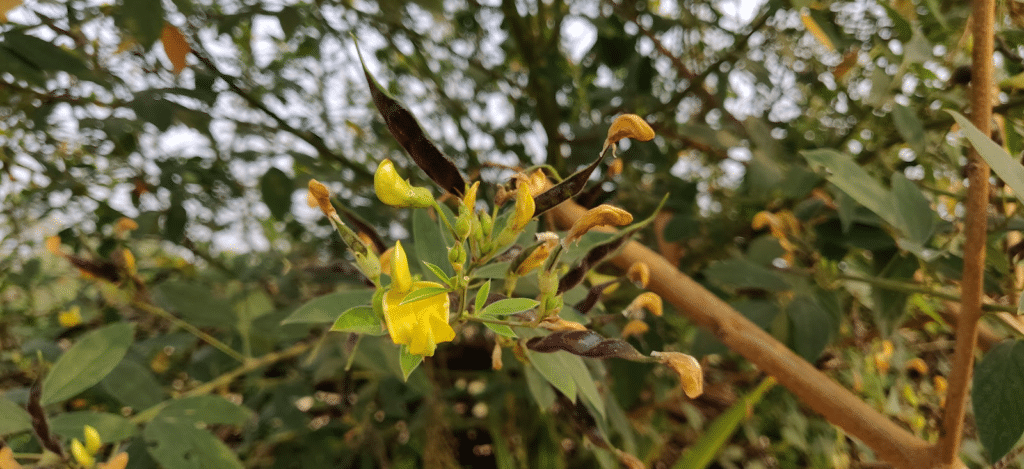
The flowers are 1 to 2 cm long and yellow in colour with some variations.
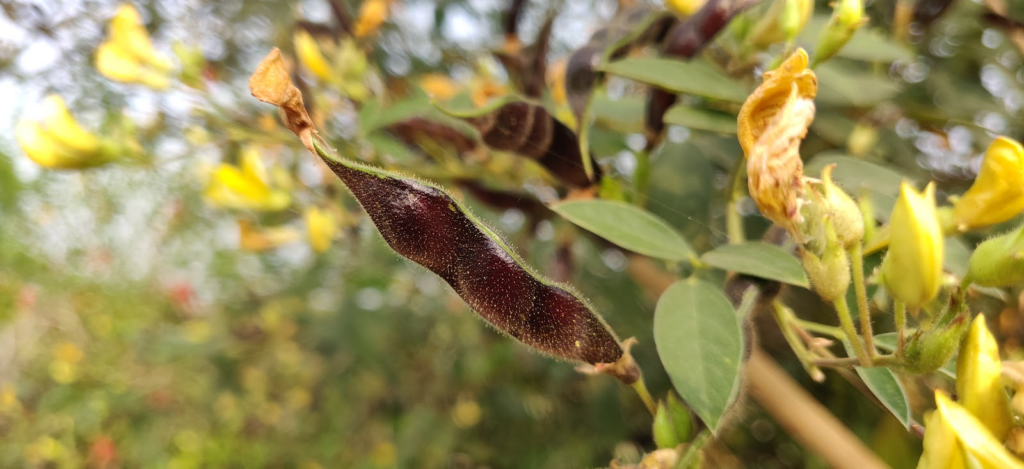
The seed pods are hairy when tender and range from green to dark brown in colour based on variety; they are flat and sometimes sickle-shaped. Each pod is 4 to 6 cm long with on an average 3 to 9 seeds inside.
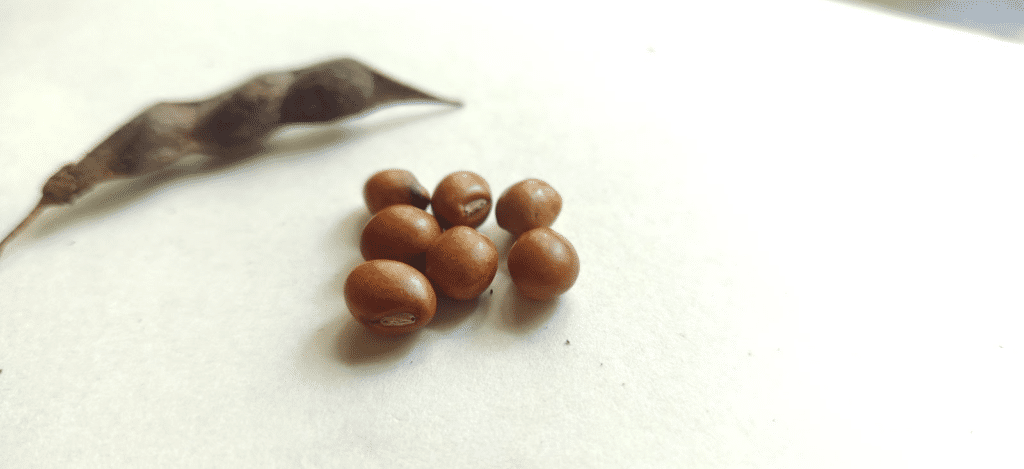
The mature seed pods turn brown and the seeds range in colour from off-white, brown, yellow, purple or a combination of any of these shades.
Propagation, Growth & Care
Here in India, we believe that pigeon peas will grow just about anywhere without any special needs or care as long as there’s no waterlogging.
Propagation
It is grown from seeds. As there are diverse varieties including hybrid and genetically engineered available online and in-store, however for best results it is recommended to look for a local heirloom variety as they have the genetic information stored to help adapt and fight disease and pests.
They are sowed roughly an inch deep however it is not necessary and they grow just fine even when you simply stick them in the ground.
We sow them when the monsoon begins, however, it can be planted post-monsoon as well. It takes around 2 to 3 weeks for germination, happens faster in warm soils and takes longer in cold climates.
It begins to flower in 3 to 4 months and the first bean harvest is available by the end of the 5th to 6th month. For example, when planted during monsoon (July), the plant achieves dense branch growth in the next 4 to 5 months and the first beans are ready for harvest by January and by March they start to dry.
However, depending on the variety and external conditions, it can take more than 7 months for the first yield as well.
Growth and Care
Climate & Temperature
It thrives in tropical semi-arid zones however can be planted in other climate zones as well, the only condition being that the soils should not be waterlogged. The ideal temperature for germination is 25° C to 30° C and post establishing it can tolerate up to 40°C, however, cannot tolerate frost and thus would be recommended to grow as an annual in temperate zones.
Interesting Adaptation Fact: It has been cultivated successfully at elevations of 6,000 ft to 9000 ft in the Himalayas.
It is sensitive to weather at the pod development stage and thus unseasonal rain or cloudy weather during the flowering stage leads to inferior pod formation.
Soil
From acidic sands to alkaline clay, pigeon peas can tolerate diverse soil ranges. It needs well-draining soils and cannot tolerate waterlogging. It thrives in a pH range of 7 to 8.5.
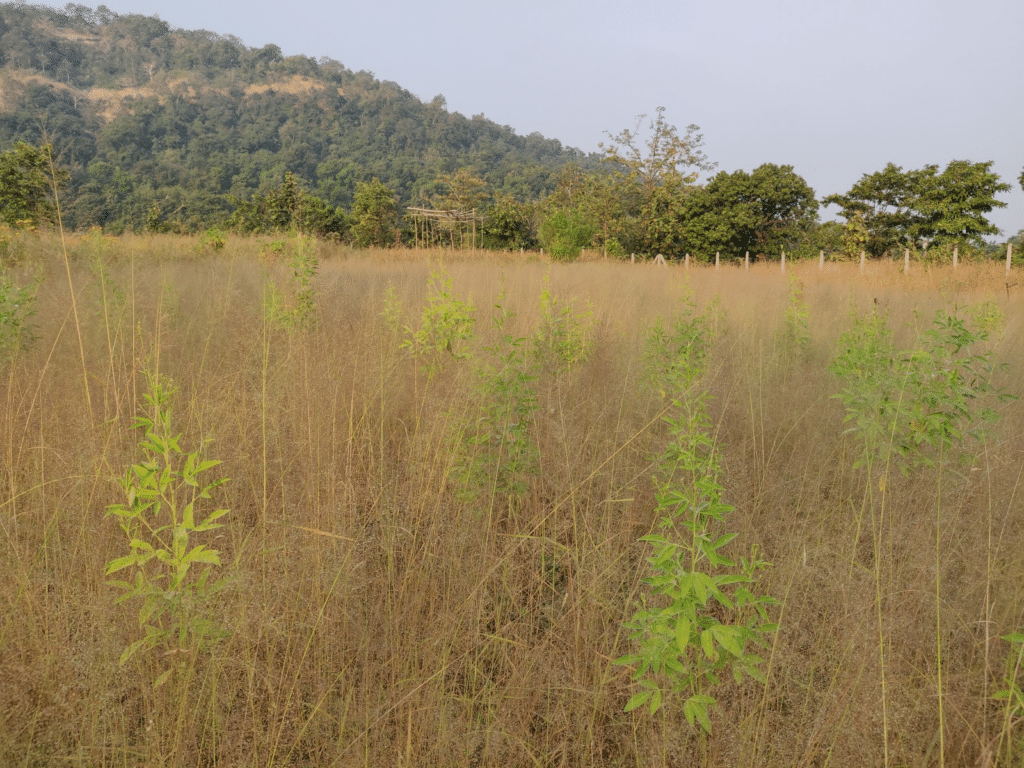
It can be sown in both zero tillage by dibbling around two inches deep to sow the seeds or by deep ploughing the land as well in a ridge and furrow pattern.
They grow well in compacted soils as well, helping loosen up and condition the soils.
Location
It needs full sun, can tolerate some shade however the yield is best when planted in full sun. There needs to be a minimum of 5 to 8ft of distance in between 2 plants to achieve a healthy spread.
Water
The deep-rooted system helps the plant grow without irrigation in semi-arid regions and can survive during droughts; however, it needs irrigation in case of prolonged droughts.
Yield Tip: for better yield, it can be irrigated during the branching, flowering and fruiting periods.
Managing Pests & Diseases
Root rot and wilting is common in humid areas with excessive moisture, it is recommended to ensure proper drainage, avoid overwatering and intercropping with millets and other crops that help cover the ground.
Some minor pests are powdery mildew, borers, aphids, pod sucking pod-sucking bugs and more.
Borer’s infest pods and seeds, however, healthy plants can combat this, thus selecting heirloom seeds is recommended. A diluted spray of Neem seed kernel extract is found to be effective.
Pod-suking bugs cause seeds to shrivel with dark patches which leads to shedding on tender green pods. In this case, companion planting with aromatic plants and neem-based pest repellents are recommended.
Do not clear the soils excessively of uncultivated greens as they help host beneficial insects, and ensure the plants are exposed to sun and accessible to birds and ants.
Overall, ensure drainage and opt for companion planting with aromatic plants and to attract the natural predators and you are good to go!
Caution: Being rich in protein and carbs, the plant does attract livestock, thus ensuring proper fencing throughout.
Regenerative Benefits For Your Garden/ Farm
Being a self-sufficient and low-maintenance perennial, it is used primarily as a food, forage, fodder, companion, green manure and cover crop..
Companion for Shade, Nitrogen fixing and more
Pigeon Pea is intercropped with early maturing annual crops like legumes and leafy greens in the ridge and furrow pattern. The annuals are harvested and replaced from time to time and the pigeon pea remains as a permanent member for a longer duration.
It is ideal to team up with newly planted fruit trees as they help provide shade for initial 3 to 4 years, fix atmospheric nitrogen (40 kg ha -1 atmospheric nitrogen) along with attracting beneficial insects due to the flowers and moisture retention below the canopy.
Bonus! the fallen leaves add valuable organic matter to the soil.
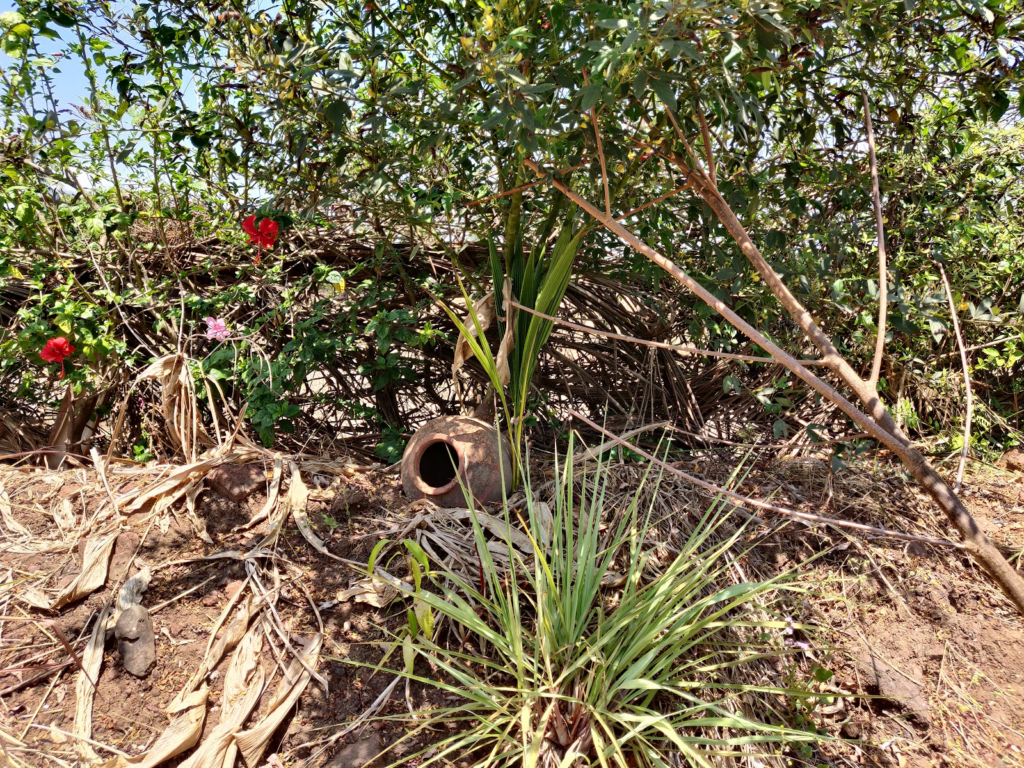
Fodder
Both the crushed seeds and leaves are excellent fodder for livestock and are highly palatable and are easily digestible.
Perennial Drought Tolerant Legume
Pigeon pea has high soil condition tolerance and is known for growing in degraded soils n drought-prone zones, thus it holds the potential to grow calorie crops as such in harsh conditions with limited irrigation and fertilizers.
Edible Benefits
A cupful of pigeon pea (100gm) contains around 1392 mg potassium and 343 kilocalories. It is a source of necessary carbs, dietary proteins and vital nutrients and vitamins like iron, iodine, essential amino acids like methionine, lysine and tryptophan and more.
Natural Skin Care Alternative
Coarse pigeon pea is added to chickpea flour along with a pinch of turmeric and made into a thick paste which is used as a natural body cleanser. It helps get rid of dirt, oils and dead skin without making the skin dry. You can add a drop of essential oils of your choice for better moisture retention. The dry ingredients can be mixed and stored in a jar and used by adding water and making a paste as and when required.
Harvesting and Storage
The branches are cut with a sickle when two thirds to three-fourths of the pods turn brown post which new shoots grow from the remaining branches.
The harvested branches are left to dry in the field for 3 to 4 days, this helps make them thrashing-ready.
They are bundled and thrashed by a stick or with a threshing machine. The branches and sticks are separated manually and the remaining threshed matter is winnowed to separate the chaff and seeds. The process is repeated until the seeds are separated and clear of any chaff.
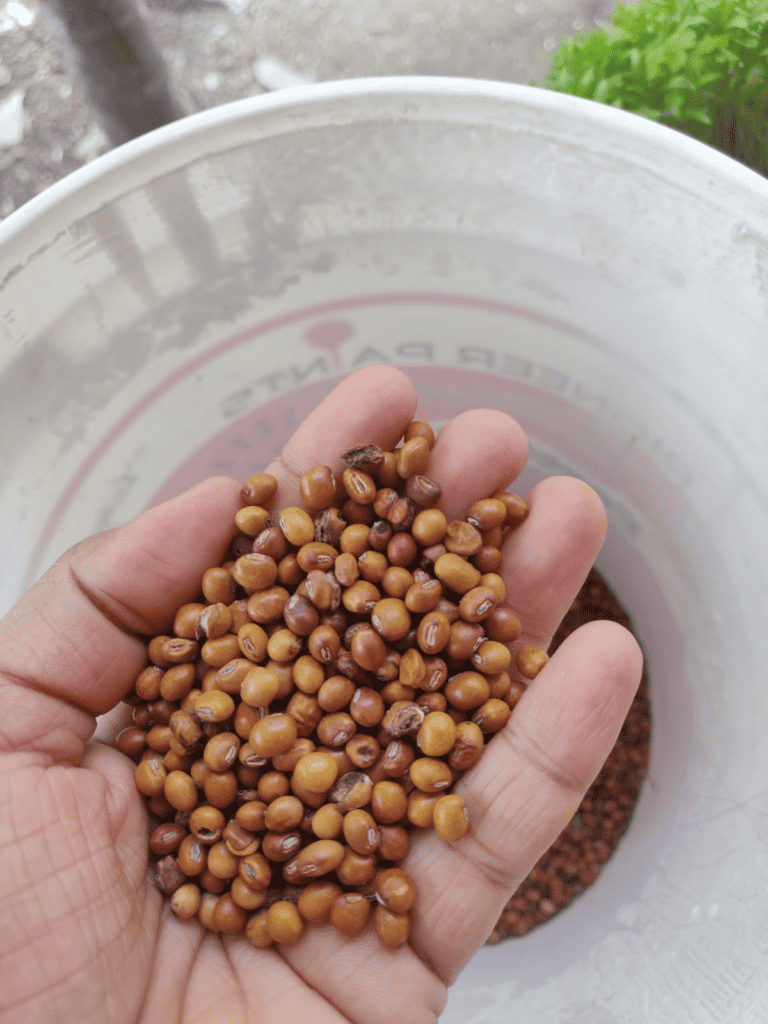
The final clean seeds are sun-dried for another 3 to 5 days depending on the season to reduce the moisture content up to 9 to 10% for safe storage.
They are sieved through a metal sieve to separate the deformed or immature seeds and the biggest seeds are stored for seeds in an airtight container or cow dung and soil-sealed baskets.
Further to which the beans are dehulled further to make split-pulse, we call it toor dal.
Processing Of Toor Dal
Dehulling is usually done by hand pounding in a traditional wooden pounder or on a stone grinder.
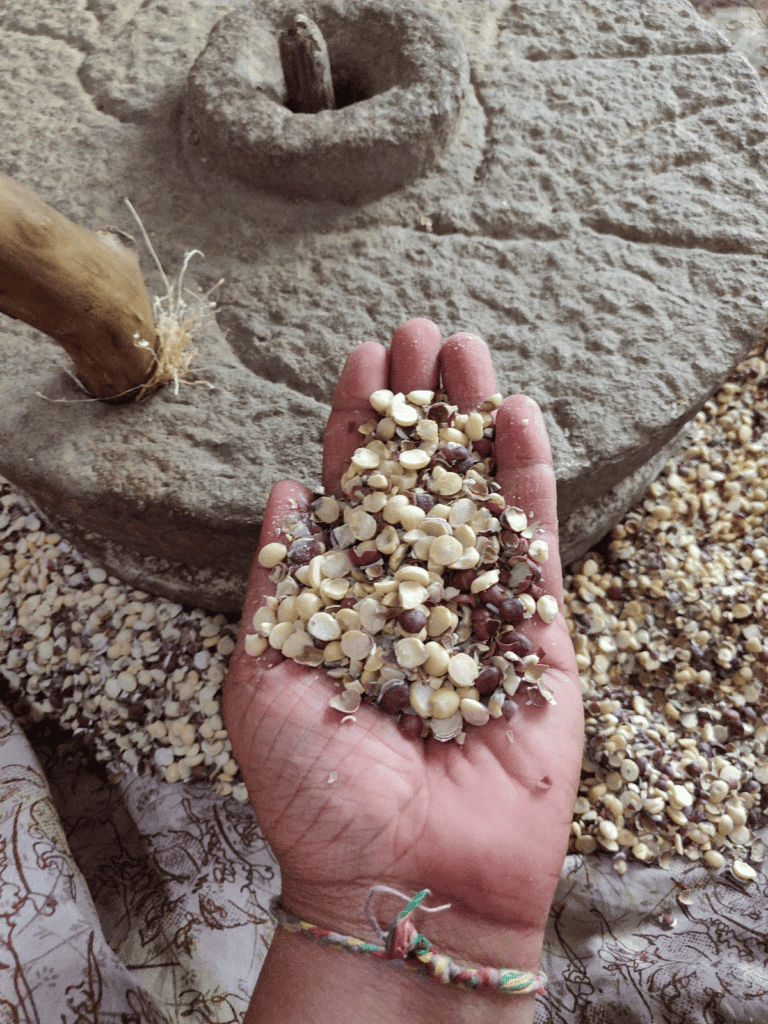
There are two traditional ways of doing it, wet and dry. In the wet method, the beans are soaked in water and sun-dried to prepare them for dehulling. The dry method involves applying oil and water together and sun drying the beans before dehulling.
The dry stems are stored separately, they are a good source of fuel for traditional wood stoves.
Traditional Applications, Edible Usage and Benefits
In India, the different parts of the plants are used in traditional medicine as well.
Traditional Applications:
- Used as a natural laxative for lactating women by including the pulse in daily diet.
- The leaf and seed paste is applied over the breast of lactating women to induce lactation.
- Leaf juice is used to treat constipation, parasites and food poisoning.
- Leaf paste is applied to oral ulcers and inflammations.
- Regulated split-lentil consumption helps lower blood sugar and cholesterol.
- The lentils are included in the diabetic diet plan as it helps to lower blood glucose levels by increasing insulin secretion
Edible Recipes
It’s an integral part of the diet in India and each state has a unique way of including it. It makes the base for most of the veg stew-based gravies and is used for meat preps as well.
The most common form of consuming pigeon pea is as dehulled split-pulse, however it is also consumed whole as dry legumes, as green beans, leafy greens and ground into flour.
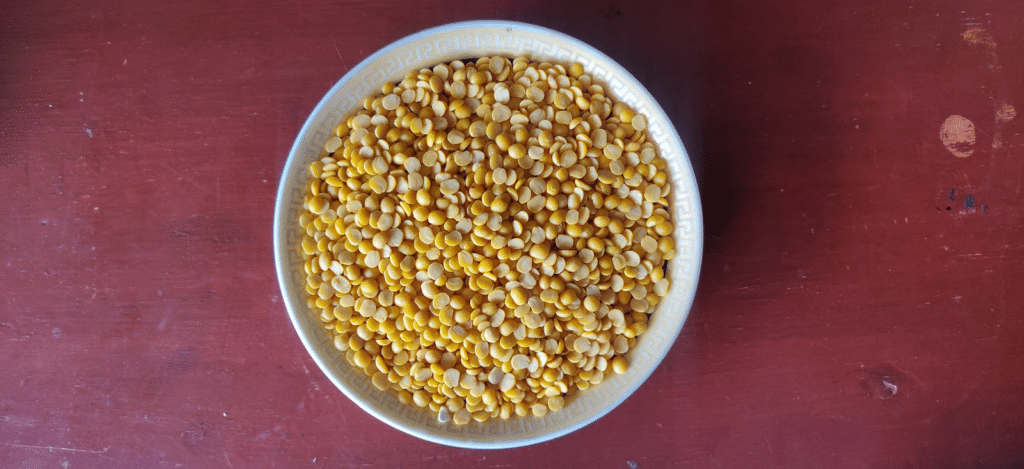
The tender fresh leaves are consumed as vegetables in the form of soup or sauteed with onion and ginger. Dried whole beans are used for making soups and stew and sprouted seeds are eaten as boiled pulses.
Toor Dal Recipe
It is a soup-like lentil stew or curry, it is made by pre-soaking the beans for an hour or so and simmering them followed by giving a tadka. The tadka is a process of enhancing the flavors of spices and infusing them into the stew. It’s done by heating vegetables, mustard or coconut oil and adding herbs, spices and condiments. The tadka ingredients and their proportions differ from state however here’s how we love our toor daal:
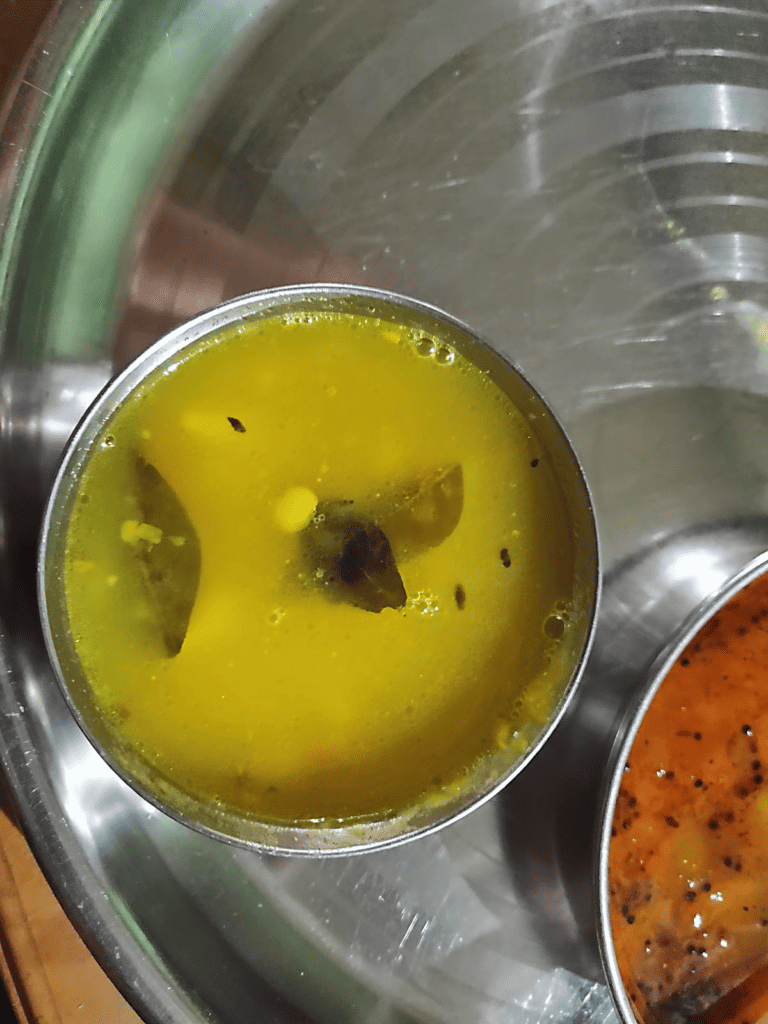
The simple quick daal: We heat a spoonful of oil, add a few mustard seeds, wait for them to crack pop and dance, then add 5 to 8 fenugreek seeds followed by 10 to 15 curry leaves and a few cumin seeds. Once they sizzle, add half inch of stone crushed ginger and 3 to 4 crushed garlic cloves followed by one sliced onion. Once the onion is caramelized, we add 2 to 3 chopped green chilies, some turmeric, asafoetida and stir them together until it starts smelling and then add diced fresh tomatoes. Once satisfied with the tadka we pour the simmered pre-soaked split-pulse, add salt, add water based on what consistency we are in mood for and let it all cook together for 10 to 15 mins.
There’s an alternative method where the lentils are simmered or pressure cooked and then the tadka is added on the top, mixed and let simmer a little longer before serving.
It is garnished with fresh coriander leaves and is served with roti or rice.
It is also made into sour stew by adding kokum (Garcinia indica) which is a local souring agent and chilli powder for spice.
Other Recipes:
You can add the pre soaked lentils to leafy greens like Dill, Spinach, Fenugreek Greens, they add a nice texture and are known for adding cooling properties to the sauteed veggies.
Dal Khichdi is a dish made by slow cooking rice and pigeon pea split-pulse along with moong dal with ample water to make a paste-like consistency. It is mildly spiced with turmeric, garlic and onion, sometimes with more ingredients as well. Khichdi is known for its easy to digest properties and is preferred as a food to eat when down with fever or weakness. It is otherwise enjoyed by increasing the spice levels in a regular diet as well.
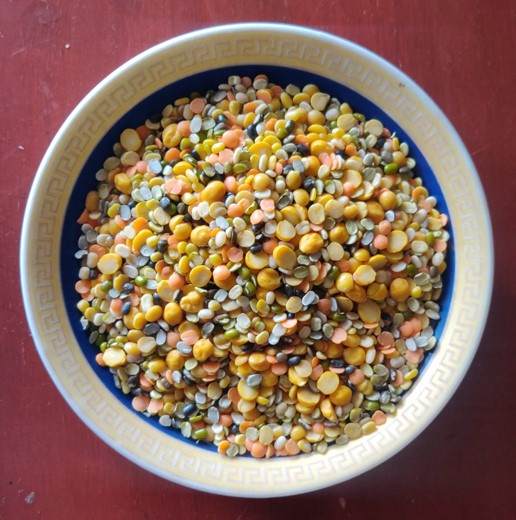
The split pulse is also mixed with other lentils, 5 to 8 different types and used for making mixed lentil dal and other prep like pakoras and cutlets which are patties with spices.
Pigeon pea is also a part of the famous South Indian; Sambar which is a flavourful gravy made of pigeon peas, other lentils and local seasonal vegetables like drumsticks, eggplants, gourds and more. It is known for its spicy, little sweet and tangy flavour coming from diverse herbs and spices, the sweetness of veggies and jaggery and the tanginess of tamarind. It is served with rice, idlis, dosa, medu wada and more. It is nutrient dense and believed to provide complete nutrition due to the diversity of ingredients and cooking methods.
Cooking Tips:
- Always soak the split pulse for min 2 hours to maximum overnight, it helps reduce the gas-causing plant compounds and activate amylase that breaks down complex starch making it easy to digest. Discard the soaked water, dilute and use it for your plants!
- De-hulled split pulse can overcook quickly, thus it is recommended to simmer and stir frequently with due attention.
- Also, remove the froth while simmering, as lentils have some level of saponins,this helps get rid of them and of any frothy or bitter taste.
Conclusion
From being able to grow without irrigation, to lower cost of production, easy growth guide, higher tolerance to external conditions and health benefits, at low cost, pigeon pea offers diverse benefits at an affordable rate.
It is also an excellent source of plant-based protein and thus is a great alternative for conscious consumption.
Bottomline is, from first-time farmers and gardeners to farmers struggling with degraded soils and droughts, pigeon pea has the potential to contribute in some form or another to our journeys. It’s worth giving a try to this promising one!
References
- Journal of Advanced Pharmaceutical Technology & Research (n.d.). Pigeon Pea. Retrieved from https://www.japtr.org/article.asp?issn=2231-4040;year=2011;volume=2;issue=4;spage=207;epage=214;aulast=pal
- Kumar CV, Naik SJ, Mohan N, Saxena RK, and Varshney RK (2017). Botanical Description of Pigeonpea [Cajanus Cajan (L.) Millsp.]. Retrieved frommhttp://oar.icrisat.org/10485/1/Botanical%20Description%20of%20Pigeonpea.pdf
- Swasthi (2023). Sambar Recipe (How to Make Sambar). Retrieved from https://www.indianhealthyrecipes.com/andhra-sambar-recipe-how-to-make-south-indian-sambar/

